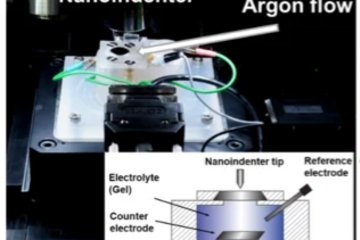All genres
2041.
Talk
Textures of Nanocrystalline CoNi. MRS Spring Meeting, San Francisco, CA, USA (2005)
2042.
Talk
The role of texture and anisotropy in nano- and microscale materials mechanics. Keynote lecture at the Plasticity Conference 2004/2005, Hawai, USA (2005)
2043.
Talk
Using the Lattice Boltzmann Method for Multiscale Modeling in Materials Science and Engineering. Lecture at the Plasticity Conference 2004/2005, Hawai, USA (2005)
2044.
Talk
Microstructure and Mesostructure of the exoskeleton of the lobster homarus americanus. MRS Spring Meeting, San Francisco, CA, USA (2005)
2045.
Talk
Crystal Plasticity Simulations in Materials Testing. Keynote lecture at the International Materials Testing Conference, Neu-Ulm (2004)
2046.
Talk
Crystal Mechanics in Metals and Polymers – Experiments and Simulations. Colloquium Lecture at Forschungszentrum Karlsruhe, Karlsruhe (2004)
2047.
Talk
Kristallmechanik in Metallen. Invited lecture at the Rheinland-Pfälzische Akademie der Wissenschaften, Mainz (2004)
2048.
Talk
How do 10^10 crystals co-deform. "Weitab vom Hooksechen Gesetz -- Moderne Ansätze und Ingenieurpraxis großer inelastischer deformation metallischer Werkstoffe'' Symposium der Akademie der Wissenschaften und der Literatur, Mainz, Germany (2004)
2049.
Talk
Crystal plasticity simulations in metals. Colloquium Lecture at the Massachusetts Institute of Technology, Cambridge, USA (2004)
2050.
Talk
Simulation of abnormal grain growth in FeSi steels. Keynote lecture at the TMS Fall Meeting, New Orleans, LA, USA (2004)
2051.
Talk
Physically-Based Large-Scale Texture and Anisotropy Simulation for Automotive Sheet Forming. TMS Fall meeting, New Orleans, LA, USA (2004)
2052.
Talk
Investigation of Nucleation Mechanisms of Recrystallization in Warm Rolled Fe3Al Base Alloys. 2nd International Conference on Recrystallization and Grain Growth, Annecy, France (2004)
2053.
Talk
Recrystallization in Polymers – Experiments and Simulations. Invited Keynote lecture, 2nd International Conference on Recrystallization and Grain Growth, REX&GG 2004 Annecy, Annecy, France (2004)
2054.
Talk
Microstructure Scales in Materials Simulation. Lecture at the Gordon Conference on Physical Metallurgy, New Hampshire, USA (2004)
2055.
Talk
Textures and Micromechanics in Experiment and Theory on Metals and Semi-Crystalline Polymers. Joint Colloquium of the University of Vienna and Technical University of Vienna, Vienna (2004)
2056.
Talk
Computational Steels. Keynote lecture at the 19. Aachener Stahl Kolloquium, RWTH Aachen, Germany (2004)
2057.
Talk
Moderne Simulationskonzepte für den Werkstoff Stahl und seine Anwendungen. VDEh Werkstoffausschuss, Düsseldorf (2004)
2058.
Talk
Simulations and Experiments on Micromechanics in Metals and Polymers. Colloquium lecture at the Department for Theoretical Physics, University of Paderborn (2004)
2059.
Talk
Optimisation of Precipitation for Controlling Recrystallization of Wrought Fe3Al Based Alloys. Treffen des Fachausschusses Intermetallische Phasen, MPI Eisenforschung, Düsseldorf (2004)
2060.
Talk
Texturentwicklung beim Warmwalzen und bei der Rekristallisation von Fe3Al-Basislegierungen. Sitzung des DFG Fachausschuss Intermetallische Phasen, MPIE, Düsseldorf, Germany (2004)











